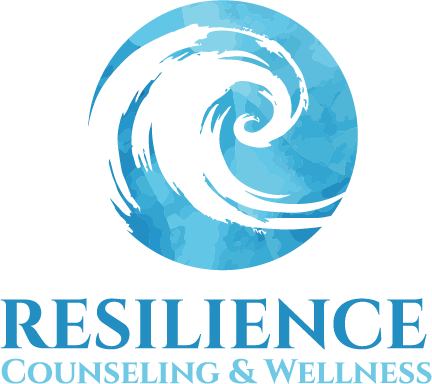Healing isn’t about eliminating complexity, it’s about learning how to live with it.

What Is Ambivalence, Really?
Ambivalence gets a bad reputation. We’re taught that emotional clarity is the goal, and that uncertainty signals indecision, weakness, or stagnation. But here’s the truth we see in the therapy room every day: holding conflicting emotions isn’t a flaw. It’s a sign of depth.
When a client says, “I want closeness, but I also need space,” we don’t rush them toward resolution. We help them build tolerance for complexity. We invite them to sit with that tension and hear what each side has to say.
Contradiction doesn’t always mean confusion. It means you’re listening to more than one part of yourself, and that’s the beginning of emotional wisdom.
Common Forms of Emotional Ambivalence
Ambivalence shows up quietly, in the in-between moments. You might notice:
- You’re excited about a new job, but grieving what you’ve left behind
- You love someone deeply, but don’t feel emotionally safe
- You’re committed to growth, but exhausted by the effort it takes
- You want to rest, but feel guilty for taking a break
Therapy offers space to say: “Both are true.” That simple acknowledgment can open pathways you didn’t know were available.
Why We Struggle with Tension
We live in a culture that prizes certainty. Pick a side. Know your truth. Move forward. But healing rarely follows that script. It’s nonlinear, layered, slow, and often uncomfortable.
Here are three reasons ambivalence feels so hard to hold:
- Social Pressure to “Get It Together”
The world wants clean answers. “Have you decided yet?” “Are you over it?” “Why are you still thinking about that?” These questions reinforce the idea that you should be resolved. - Fear of Being Seen as Indecisive
Clients often worry that ambivalence signals a lack of self-trust. But in reality, it’s a sign they’re tuning in to all parts of their experience, not just the loudest one. - Discomfort with Emotional Messiness
It’s vulnerable to admit you’re feeling both love and frustration, relief and sadness, clarity and doubt. But that vulnerability is often the beginning of deep healing.
How Therapy Holds Space for Contradiction
Therapy isn’t about finding “the answer.” It’s about building inner capacity, to feel, tolerate, reflect, and eventually choose. We’re not pushing you toward resolution. We’re walking with you through emotional nuance.
Inside the therapy room, we might:
- Help you name both truths: “I want to be seen, but I’m afraid of being misunderstood.”
- Track how your body responds to each emotion
- Explore the origins of your conflicting beliefs (family, culture, past experiences)
- Offer permission to pause, rather than decide
One client recently said:
“I thought therapy would help me figure things out. But it’s helped me feel okay not figuring them out, at least not yet.”
That’s real progress. That’s safety. That’s emotional maturity.
Tools to Explore Emotional Complexity on Your Own
While therapy deepens this process, you can begin to build tolerance for emotional tension at home. Try these practices:
The Both/And Journal
Set a timer for 10 minutes and write about a topic you feel torn over. For each page, name the contradictory feelings, not to solve them, but to accept them.
Example prompts:
“Part of me feels… and another part of me feels…”
“If I slow down, I feel relief, but also guilt.”
“I crave connection, and I need solitude.”
This builds internal dialogue rooted in honesty, not pressure.
Breath-Based Grounding
Ambivalence activates the nervous system. To regulate:
- Try box breathing (inhale 4 counts, hold 4, exhale 4, hold 4)
- Place one hand on your chest, one on your belly and track where emotion lives
- Repeat the mantra: “Both truths are welcome here.”
Breath doesn’t erase tension, but it calms the body enough to hold it.
Permission to Feel All of It
Emotional nuance is a sign of evolution. You’re no longer reacting. You’re relating. You’re learning to sit with discomfort long enough to let clarity emerge organically, rather than forcing it to arrive on demand.
clarity emerge organically, rather than forcing it to arrive on demand.
Therapy affirms this slower process. We help clients release the need for a quick fix and learn the power of presence. Not because you’ll always feel this way, but because you deserve space while you do.
When Ambivalence Becomes Overwhelming
While emotional contradiction is part of being human, sometimes ambivalence becomes more than just complexity, it becomes paralysis. If you notice that indecision is interfering with your relationships, work, or sense of self, it might be time to explore what’s underneath.
Signs that ambivalence may need deeper support:
- You feel chronically stuck, unable to make even small decisions
- You experience looping thoughts that don’t resolve, even with reflection
- You avoid situations or people because you fear making the “wrong” emotional move
- You feel disconnected from your body or intuition
- You’re exhausted by trying to “figure it out” all the time
Therapy can help you gently untangle these patterns, not by forcing clarity, but by building safety, insight, and emotional flexibility.
You’re Allowed to Feel Both
If you’re navigating tension, contradiction, or emotional complexity, we’re here to help. You don’t need polished clarity to begin. You just need a safe place to unpack what feels layered and real.
Schedule a free 15-minute call with Frankie to find the therapist that best fits your emotional season.

